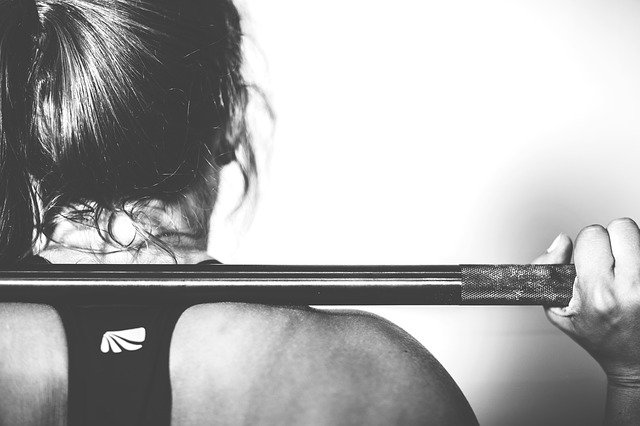
They help you move and stand more easily. These muscles also prevent injuries and improve your performance in other exercises like running or climbing the stairs. You can build strong glutes with bodyweight exercises.
Glute Muscle Exercises Using Bodyweight
You can build stronger glutes by doing glute strengthening workouts regularly. Add resistance as you get stronger. Ben Walker of Anywhere Fitness Dublin, Ireland says that adding weights is the best way of doing this.
Start by lying down on your stomach and putting your feet hip-distance away. Then, bend your knees to 90 degrees so your legs are at an angle. To do this exercise, you can either use a flat bench or place your feet on the ground.
Squeeze them and push into your heels to lift your glutes. Hold for a second, and then slowly release. Repeat for several reps.

Straight-Leg Reverse Hypers (top photos)
If you do not have access to a table, you can still perform this exercise on your hands and feet with your knees and wrists placed below your shoulders. This position allows for you to strengthen your glutes and consciously activate them while maintaining correct form.
You can increase the intensity by adding a 3-second pause to the end of the movement. This will help you focus on your glutes.
Wall Sits & Glute Bridges
Another effective bodyweight glute exercise is the wall sit, where you lie on your back with your feet on a box or bench. Push into your heels and drive your body weight up through your heel to extend your hips. You can also perform the exercise lying on your back by using your elbow as a stand.
Fire Hydrants – Straight-Leg and Bent-Knee Variations
Fire Hydrant Exercise is a great glute exercise you can do using your own body weight. Walker suggests that you perform this exercise on a regular schedule to increase your gluteal strength and gain muscle mass. For beginners, the Bent-Knee variant is best. The Straight-Leg variation can work the hamstrings as well.
Walk Lunges - Walking lunges are an alternative to the traditional forward lunge that strengthens the gluteus medius as well as the abductors and adductors, which are often neglected in lower-body workout programmes.

These exercises can be done daily to improve posture, strengthen glutes and increase heart rate. They are also a great addition to your warm-up routine.
When working out, complete all reps on the one side of the body before switching.
FAQ
Can I exercise after eating?
It depends on the type and intensity of your exercise. Avoid strenuous activities after meals because they can cause stomach cramps. Focus on light aerobic activities such as biking or brisk walking.
Which is more important: Exercise, diet, or sleep?
It all depends on your goals. If you want to lose weight, diet is the most important factor. If you are looking to build muscle mass, however, exercise is the best option. The last factor is sleep, which only impacts how well you perform during your day.
What does nutrition do for your body?
Your body functions properly when you have the right nutrition. To ensure that your body receives adequate nutrition, it is best to eat a balanced meal with lots of fruits and vegetables, lean protein, whole grain, as well as healthy fats.
Do I need to eat before going to the gym?
No. It doesn't matter what you eat before going to the gym. You might be hungry after a workout, so you may want to snack on fruit or yogurt.
What should I do if I'm working out?
Consuming large quantities of alcohol can cause you to gain weight. The moderate intake of alcohol (one a day) may improve endurance for workouts. It may also be beneficial in reducing fatigue and muscle aches that can result from vigorous exercise.
How Can I Get Started With Fitness?
Start small. Begin by taking 10 minutes each morning to walk around the block. This will give you basic movement patterns and give your muscles time to adapt to the new routine. Once you are comfortable with this form of exercise and have gained some experience, you can start adding steps to your daily workout routine.
How many hours should I sleep each night?
The amount of sleep that is recommended for each individual depends on their age, gender and needs. Most adults need between 7 and 9 hours of sleep per night. Children and teens typically need between 7 and 9 hours of sleep each night. However, this number drops as they get older.
Statistics
- One study showed that adults who watch more than 4 hours of television daily had an 80% higher risk of death from cardiovascular disease. (heart.org)
- In 2018, the World Health Assembly agreed on a global target to reduce physical inactivity by 15% by 2030 and align with the Sustainable Development Goals. (who.int)
- An estimated 110,000 deaths per year could be prevented (cdc.gov)
- Globally, 28% of adults aged 18 and over were not active enough in 2016 (men 23% and women 32%). (who.int)
External Links
How To
How to enjoy Zumba classes
There are many ways to enjoy Zumba class. You should choose the best option depending on your preferences and goals.
Zumba classes are available at any Zumba studio. Many studios are located in malls, shopping centers, schools, universities, hospitals, churches, gyms, parks, community centers, etc. You can find a Zumba class close to you if you are interested in learning how to dance, or simply exercising. A Zumba class is free. There are no annual fees, monthly payments or membership fees. Just show up, and you can start dancing.
Online Zumba classes are another way to enjoy Zumba. There are thousands upon thousands of websites that provide free videos of Zumba classes. You can view these videos anywhere you want - at home, office, school, church, gym, park, mall, hotel room, airport lounge... anywhere. These videos can be downloaded to your computer so you can play them whenever you want.